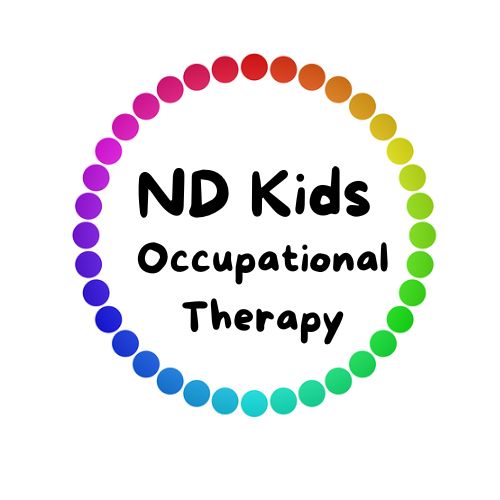A common question that often arises is whether parents can claim Disability Living Allowance for their PDA child. The short answer is yes – you can claim DLA for your PDA child. Read on to find out more information about DLA, the benefits it offers and how to claim.
What is DLA?
DLA is the main disability related benefit for children under 16. It is provided to meet the extra costs you may face as a result of your child’s disability. DLA is a non-means tested benefit which means that you can receive it irrespective of your family income.
DLA has two parts – the care component and the mobility component. If your child is eligible for DLA they may qualify for one or both components.
The care component is paid at 3 different amounts – lowest rate care, middle rate care and highest rate care. The mobility component is paid at either a lower rate or higher rate.

What are the benefits of DLA?
If your child is awarded DLA you will receive a sum of money into your account on a monthly basis. For the year 2024/5 the award is paid at the following weekly rates:
- Lowest rate care – £28.70
- Middle rate care – £72.65
- Highest rate care – £108.55
- Lowest rate mobility – £28.70
- Highest rate mobility £75.75
In addition if your child is awarded DLA you may also be entitled to:
Additional benefits
For example if you receive Universal Credit you will get extra payments for a child who gets DLA, you could also be eligible for Carer’s Allowance and help with rent. See this post for more information.
Help with transport or a Blue Badge
Discounts to attractions and travel.
Many places such as the cinema, swimming pools, National Trust, museums and theme parks offer free or discounted tickets for a disabled child or carer. We’ve got free tickets at places like Legoland, Slimbridge WWT and Jumpin Fun inflatable park.
You may be asked to show proof of your carer status or your child’s disability. A DLA award letter is widely recognised as proof of this. You can find out more information at the Facebook page DLA Childrens Days Out.
How is Disability Living Allowance awarded?
Your child does not need a diagnosis to be awarded DLA. Their eligibility to receive DLA is based on if they need ‘much more looking after than a child of the same age who does not have a disability’ or / and ‘they have difficulty getting about’.
As a parent of a child with PDA it is highly likely you do a lot for your child. You need to document on the form the additional care and support that your child needs in comparison to another child their age who doesn’t have a disability.
The DLA form will ask you questions about the additional support your child needs with:
- Walking around
- Safety outside
- Getting into and out of bed
- Toileting
- Washing, bathing, showering, using a toothbrush
- Dressing and undressing
- Moving around the house
- Medication and therapy
- Vision, hearing and communication needs
- Fits and seizures
- Safety, supervision and development
- Play
- Support needed at nursery or school
- Help and supervision needed at night

Advice for claiming DLA and filling out the form for your PDA child:
Phone up for the form
When you phone up to ask for a form the form will be date stamped and your claim will be paid from this date. You can also apply online, but you will only be paid from once the form is submitted. Phoning up means that you will receive weeks of money if your claim is successful.
Describe their difficulties
There is a question that asks about the child’s health condition or disability. Don’t worry if your child doesn’t have any formal diagnosis of PDA, autism or any other condition. List the difficulties they have e.g. ‘anxiety’, ‘sensory difficulties’, ‘communication difficulties’, ‘fixed behaviour’, ‘mood swings’ as well as any other physical conditions e.g. ‘constipation’, ‘asthma’, ‘eating disorder’.
Provide examples of what they need help with on their worst day
Do you need to provide extra reassurance, do they need additional time to do the task, do you have to buy particular clothing due to sensory needs or do they need only eat certain foods? Perhaps you provide extra supervision to keep them safe or to prevent fights with other children? Do you need to spend time negotiating with them? Do they refuse to engage in activities or need a trusted adult and specific adaptations to be able to go to a club?
Give a time range
The form asks how many minutes each activity takes. As we know levels of anxiety fluctuate with PDA and so what a child can manage one day they may not be able to do the next. You can put time ranges in the boxes e.g. 5-30 minutes to complete an activity. If you are not sure how long things normally take try and keep notes or a diary for a week before filling in the form.
Give as much information as possible
Remember the person deciding on your claim has never met your child. Give them as much detail as you can. Decision makers aren’t medically qualified and may not know anything about PDA or autism.
Be sure to provide specific examples and detailed descriptions of how PDA impacts your child’s daily life, including any challenges they face and the support they require. You will need to use additional sheets as there isn’t much room to write in the boxes provided.
Gather Evidence
It’s vital to provide as much evidence as possible to support your claim for DLA. Evidence can include repeat prescription forms, medical reports, a letter from someone who knows the child and assessments from health care professionals which detail your child’s care and mobility needs. If you are interested in an occupational therapy assessment to support your claim please read more here.
Take your time
The DLA form is long and laborious. I have done it twice for my children and helped other parents to complete it. I advise that you do it in chunks, seek out morale support and when you have completed it take photos of the form so you don’t have to start from scratch if heaven forbid it gets lost in the post!
Seek support
Applying for DLA can feel like a huge hurdle, especially for parents of children with complex and little understood needs like PDA. Resources and organisations that can help include:
Conclusion
Claiming DLA for your child with PDA is time consuming and laborious but it can provide much needed financial support to help cover the extra costs of caring for a child with complex needs. By understanding the eligibility criteria, gathering evidence, and seeking support, you can navigate the application process with confidence. If you would like to submit an occupational therapy report as part of your evidence detailing what help your child needs with dressing, eating, toileting, washing, playing, moving around and accessing community facilities please email us to find out more or arrange an assessment.
To see the full list of eligibility criteria and to make a claim please see the government page on DLA.
